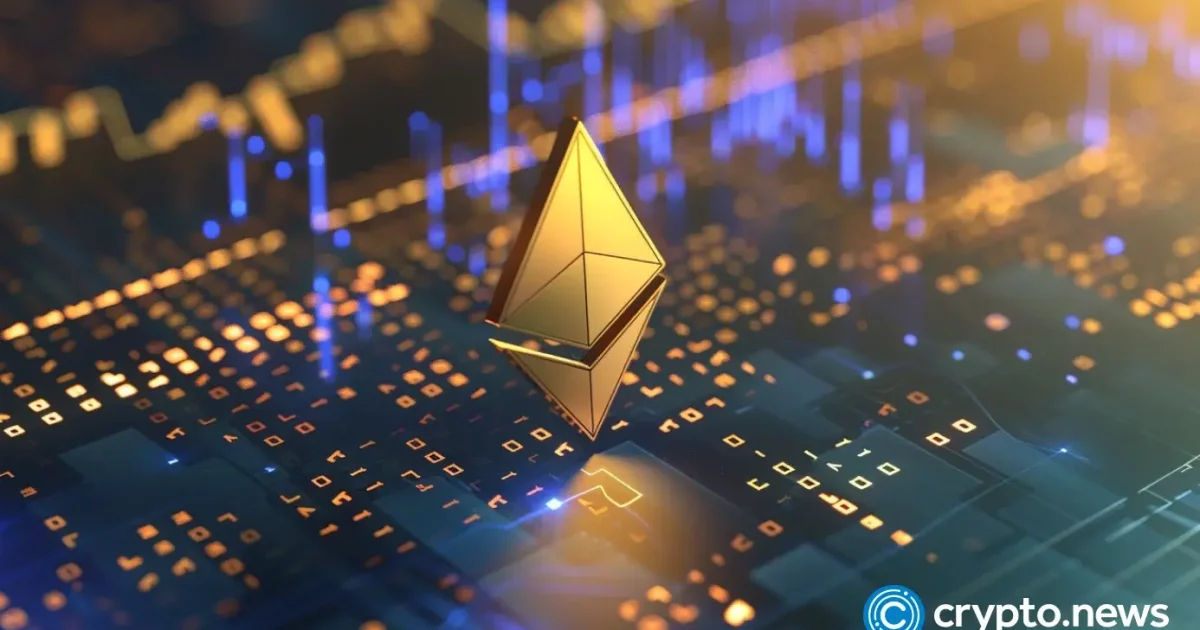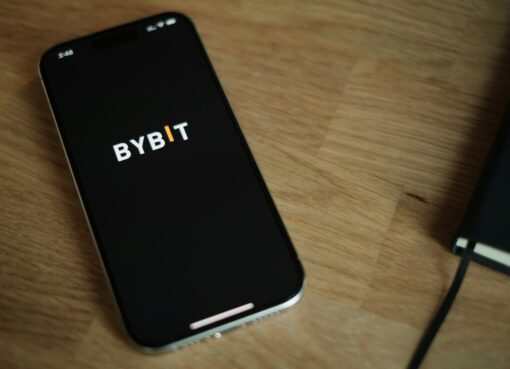How could Ethereum’s first spot ETF approval drive its price to $10,000? Uncover the key elements influencing this bullish outlook.
Ethereum (ETH) is in the spotlight as the crypto world eagerly awaits the launch of the first spot ETH ETF. As of July 2, ETH is priced at $3,447, marking a 0.33% decline in the last 24 hours.
ETH hit a monthly low of $3,244 on June 24. Since then, it has rebounded sharply, gaining about 6% since the low. This stronger price action for ETH suggests bullish sentiments as the market anticipates the upcoming ETF launch.
However, the U.S. Securities and Exchange Commission (SEC) has decided to delay the much-anticipated launch of Ethereum ETFs.
Initially planned for early July, the launch has been pushed back following additional comments from the SEC on the S-1 forms submitted by potential issuers. These issuers now have until July 8 to resubmit their revised forms, potentially pushing the launch to mid-July or even later.
This launch is part of a two-step approval process. The first step, the approval of form 19b-4, was completed in May. However, the S-1 forms, representing the second step, lack a fixed deadline, leaving issuers at the mercy of the SEC’s review timeline.
Let’s now understand the Ethereum ecosystem and market updates to see what we can expect from the upcoming ETF.
Ethereum ecosystem updates
Ethereum is buzzing with activity as it prepares for the launch of its first spot ETH ETF. Vitalik Buterin, Ethereum’s co-founder, recently shared a blog post detailing the latest developments and goals within the Ethereum ecosystem.
One key focus for Ethereum is improving transaction confirmation times. Currently, transactions on Ethereum’s Layer 1 (L1) network confirm within 5-20 seconds, thanks to the implementation of EIP-1559 and consistent block times post-Merge.
While this speed is competitive with credit card payment processing, certain applications require even faster confirmation times, measured in milliseconds. Buterin has suggested potential changes.
Ethereum’s current consensus mechanism, Gasper, employs a slot-and-epoch architecture. In this system, validators vote on the chain’s head every 12 seconds, and it takes 32 slots (approximately 6.4 minutes) for all validators to cast their votes. Finality, which provides strong economic assurance, is achieved after two epochs (12.8 minutes). However, this process is complex and slow.
Buterin’s proposed single-slot finality (SSF) aims to simplify and accelerate this process. Instead of waiting for multiple slots and epochs, SSF would finalize each block before proceeding to the next. This approach resembles Tendermint consensus but retains Ethereum’s “inactivity leak” mechanism, which aids in chain recovery if validators become inactive.
However, SSF requires validators to publish two messages every 12 seconds, presenting a challenge. Recent proposals like Orbit SSF suggest methods to mitigate this workload.
Meanwhile, Ethereum is transitioning towards a rollup-centric roadmap. This means that while the base layer (L1) emphasizes security and data availability, Layer 2 (L2) solutions like rollups handle the majority of transactions.
Rollups offer the same security as Ethereum but at greater scale and speed. Nonetheless, users seek even faster confirmations than the current 5-20 seconds.
To address this, rollup preconfirmations have been proposed. This method involves a smaller group of validators quickly endorsing blocks, providing faster assurances to users. These preconfirmations are eventually published to L1 to ensure security and finality.
The proposed preconfirmation approach leverages advanced Ethereum proposers to offer preconfirmations as a service. Users can pay an additional fee to ensure their transaction is included in the next block. If a proposer fails to fulfill their commitment, they face penalties. This mechanism can also apply to L2s, facilitating faster transaction confirmations.
Faster transaction confirmations and simplified consensus mechanisms could attract more users and developers, thereby increasing demand for ETH. As the launch of the spot ETH ETF approaches, these improvements could bolster market confidence and drive up ETH’s price.
Ethereum gas fees and total value locked (TVL) levels
As Ethereum prepares for the launch of its first spot ETH ETF, two critical aspects of its ecosystem come into focus: gas fees and total value locked (TVL).
Gas fees are integral to Ethereum’s operation, covering transaction and smart contract execution costs while incentivizing network security through validator rewards.
Recently, there has been a significant drop in gas fees. According to Dune Analytics, the average gas fee on June 30 plummeted to just 3 Gwei, equivalent to $0.14. This marks a stark contrast from last year, when median gas prices ranged between 15 to 20 Gwei, with a peak of 83 Gwei recorded on March 5 this year.
Several factors contributed to this decline. Analysts attribute it to increased efficiency in the Layer 1 (L1) market, driven by expanded Layer 2 (L2) activity and the introduction of “blob transactions” via EIP-4844, enhancing Ethereum’s scalability.
Lower gas fees make Ethereum more accessible, potentially fostering broader adoption. Moreover, affordable gas fees can stimulate activity in sectors like decentralized finance (DeFi) and NFTs, which were previously hampered by high transaction costs.
Meanwhile, TVL represents the total capital held within Ethereum’s DeFi ecosystem, serving as a critical metric for network health and usage. However, ETH’s TVL has recently declined. After peaking at $67 billion on June 6, it has since fallen to $59.45 billion as of the latest data, marking an approximate 11.3% decrease.
This decline follows earlier growth in the year but remains well below its peak of $106 billion in November 2021, coinciding with ETH’s all-time high price.
Several factors contribute to this trend. Firstly, the broader crypto market’s volatility has impacted investor confidence across the board.
Secondly, lower gas fees could potentially reverse the TVL decline by attracting more users and developers to Ethereum-based applications, thereby enhancing the network’s overall utility and value proposition.
What to expect next?
Matt Hougan, a leading expert on crypto and ETFs, predicts that Ethereum ETPs (Exchange-Traded Products) will attract $15 billion in net flows within their first 18 months.
He bases this estimate on the relative market sizes of Bitcoin and Ethereum, alongside existing investment trends in crypto ETPs across Europe and Canada.
In these regions, Bitcoin ETPs hold a larger share of assets compared to Ethereum ETPs, roughly aligning with their market cap weights. Hougan anticipates a similar trend in the U.S., with ETH capturing approximately 22% of the market share, slightly lower than its 26% market cap weight.
Hougan further explains that U.S. investors currently have $56 billion invested in spot Bitcoin ETPs, projected to grow to $100 billion by the end of 2025.
Applying a similar growth pattern to Ethereum, he estimates that spot Ethereum ETPs will need $35 billion in assets under management (AUM) to reach parity with Bitcoin. Given that ETHE will launch with $10 billion in assets, the net flow required is approximately $25 billion.
Comparing these figures with the European and Canadian markets, where Ethereum ETPs hold about 22-23% of the total crypto ETP market—slightly lower than ETH’s market cap weight—Hougan finds consistency across geographies, reinforcing his confidence in the estimate.
After adjusting for expected lower relative demand and excluding carry-trade assets affecting Bitcoin ETFs but not Ethereum ETFs, Hougan revised his net flow estimate down to $18 billion, and further down to $15 billion.
Meanwhile, market sentiment surrounding the launch of Ethereum ETFs is bullish. Andrey Stoychev, head of prime brokerage at Nexo, believes ETH could reach $10,000 by the end of the year, suggesting that ETH ETFs in the U.S. and Asia could drive ETH to this level, matching Bitcoin’s post-ETF performance.
If the predicted capital inflows materialize, Ethereum’s market cap could experience substantial growth, potentially driving its price higher.
However, as always, it’s essential to remain vigilant, considering both the opportunities and risks associated with the crypto market. Trade wisely and never invest more than you can afford to lose.




